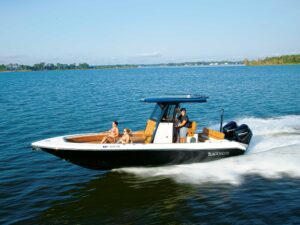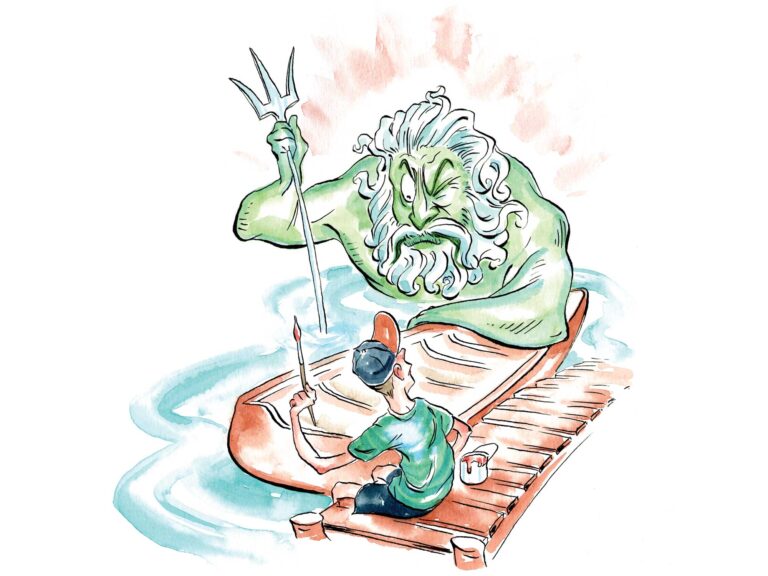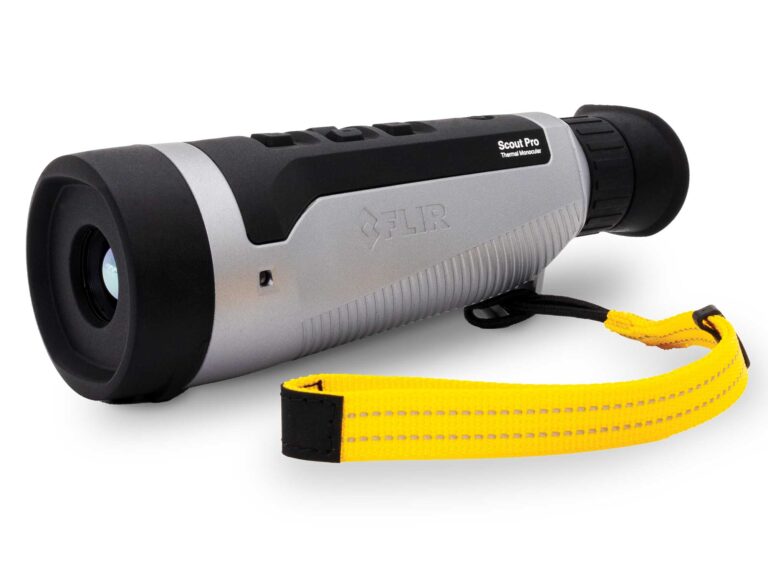
On the surface, a boat show is like a movie trailer, a collection of perfect scenes all carefully selected and arranged so that you see only what the producer wants you to see. Fiberglass is glistening, prices are attractive, and salespeople are all knowledgeable professionals just waiting to help you make a deal.
Everybody wants to buy that ticket.
Behind the scenes, however, there’s a lot more to the plot — and the process. How valuable would it be if you knew the sales games, the subtle marketing tricks and the pricing realities that make up the whole feature, and not just the teaser?
Cue Jack
Jack’s a 20-year industry pro who’s acted in this drama for years. From the opening act to the end credits, he knows how things work, and he’s willing to open up about his craft. Together, we walked a prominent boat show, me watching the main feature while Jack almost simultaneously gave me the behind-the- scenes exposé.
I’m sharing his best lines, along with the motivation behind them. Trust me — they’re not only worth the price of admission, but they may also help you get a real deal.
“First lesson? Get someone who knows what the hell he’s talking about.”
Boat shows produce a lot of traffic. In today’s economy, many dealers just don’t have that many salespeople, so they load up on bodies, not all of whom extensively know the product. Some may even be consumers themselves. Ask the wrong one for help and you may be basing your buying decision on a lot of misinformation.
“Dealers are trying to fill space for free,” Jack explains. “They need people in there to do the work. Ask up front: are you a Brand X specialist? Have you been to the company’s sales training? Do you have certification? If [the salesman] says, ‘Well, I’m really only helping out,’ that’s not the guy you want to be talking to. He can say the boat is great, but it’s an opinion. And if he says something mistakenly, it could be misconstrued as fact.”

Determining the type of water you intend to boat in most of the time drives a cascading series of decisions that can affect diverse characteristics, from which beach or cove you can explore to economy of operation. Hulls with deeper-V shapes ride smoother but draw more water and may require more power to achieve a given speed. Boating Magazine


Marinas are costly but convenient. A trailer requires maintenance and registration, yet provides self-sufficient freedom. Boating Magazine
Don’t be afraid to ask salesmen what kind of training they have in the product. Qualify who they are, what they know and how long they’ve been with the company.
“There’s a huge difference between what the experienced specialist knows and what Joe Blow would know,” Jack cautions. “Don’t assume the first person you talk to knows everything about the boat.”
“No one knows a brand and model better than the experienced salesman…who has to sell against it.”
Don’t visit just qualified representatives of the boats you’re interested in. Take the time to visit their competition as well.
“Tell competitors what you’re considering, and then step back and listen,” Jack says. “You’ll get a lot of info to consider.”

The rated capacity, or the number of berths or seats, isn’t necessarily equal to the number of people that will be comfortable aboard. What’s your average outing duration? Boating Magazine

Displacement is a measure of volume and so is a better measure of boat size, especially for a cruiser. Most service fees are based on LOA. Boating Magazine

Is sleeping aboard a reality for you? An alternative is to cruise to waterside hotels. Of course nothing beats dawn breaking in a scenic cove. Boating Magazine

You can fish aboard a ski boat, ski from a fish boat and party aboard any boat. Be sure to consider the compromises before you buy. Boating Magazine
As proof, he guides me to a nearby wakeboard and ski boat dealer and does just that. Soon, we’re hearing an interesting collection of cons to match the pros touted by our “favored” dealer, everything from the downsides of that manufacturer’s unique take on boosting wake size to a suggestion that the manufacturer lower the boat’s tower on the spot. (“He knows the other guy’s tower is a real pain in the ass,” Jack says under his breath. “That’s why he’s pushing us to get a demo.”) In another instance, a dealer suggests we go back to the manufacturer in question and challenge its claim of 100 percent fiberglass construction. “Check out the coaming panels, and pick up a few seats and peel back the vinyl,” he urges. “You’ll see that there’s wood in there.”
“Sure, some of what they tell you may just be salesman BS,” Jack says, “but if you go to several competitors, you’ll start to find some common ground in what they reveal. Then, with all the cards on the table, you can weigh the value of that info to you as a consumer.
“It just gives you some balance to make a more educated decision.”
The challenge for the consumer, however, is deciding what’s real and what’s BS. Competitive dealers may feed you a litany of all the common knocks they have against the boat you are considering. Absorb them, and then go back to the boat you’re comparing against and verify.

Power choices are more varied than ever. Runabouts with jets and outboards now compete with sterndrives, and larger boats now feature pods or outboards in addition to sterndrives and inboards. Multiple engines make sense for enhanced dockside maneuverability, redundant safety for boaters operating far from shore and the production of enough horsepower to make the boat plane.How much is that? As a rule of thumb, look for a minimum of 100 horsepower per 2,000 pounds of displacement, including the weight of engines, gear and crew. Boating Magazine

You can plunk down a bag of cash for a boat, get a loan or provide a combination of trade-in, cash and financing. You know the price now, but you won’t know the cost until you sell the boat or trade it in. Boat loan rates averaged between 4.9 and 8 percent as we went to press. But rates change, so shopping as hard for them as for the boat pays off.
Coming Clean
When you trade in your boat, your dealer has to sell two boats to make one sale. This can weaken your negotiating position. Boating Magazine

Trading in is often simpler. Selling it yourself usually nets a higher price but takes time and offers no tax advantages. Boating Magazine

Boat loans can be stretched out over many years, easing the “cost entry.” Paying cash makes trading up — or out — easier. Boating Magazine
“Sales pitch — or the voice of experience?”
Likewise, when you find qualified, knowledgeable salespeople, give credence to their advice. “Hear that?” mutters Jack, eavesdropping on a salesman’s best pitch. “The sales guy is trying the classic up-sell in power. The customer’s looking at a small boat with a simple 3.0-liter, but the sales guy is trying to convince him to step up to a 4.3. Is he selling, or is he advising?”
I know where he’s going. Many consumers will buy in at the low entry-level price but ultimately be disappointed with the lack of power once they add their family, gear and a year of experience to the mix. A truly good salesman will risk the quick sale in order to educate customers enough so that they may avoid a long-term mistake for short-term savings.
“If there’s a portion of the boat that doesn’t get discussed, it’s probably because the salesman knows it’s a product deficiency.”
Jack also says to pay attention to any areas your salesman avoids discussing. Noting a nearby model with the hull cloaked in black, he raises this concern: “It might be nothing, but why are they covering it up? I’d check for corrosion, or other indications that it’s been in the water. You might think you’re trying to deal on that boat, and they might have taken it out of the water to show. It could even be a customer’s.”
“What you see is what you get — except when it’s not.”
Those prices you see might not be for the exact model the price tag is affixed to. “Dealers will put base pricing to get people interested,” Jack says. “This boat may be listed at $42,000 base price, but it’s really outfitted at $65,000. That’s probably not an intentional bait and switch, but they’re certainly saying this boat costs $65,000 but you can get it a whole lot cheaper if you knock off some options.” Still, he affirms the days of true deceit are mostly long gone. “The people who are still in the game, they do it right. They sell a quality product. There’s not a lot of hiding. … It’s mostly in the way they price the product.”

A flying-bridge boat provides more living space than a comparably sized express. Flybridge visibility is generally better, though seeing the transon during docking can be hard. Cy Cyr

Express boats offer less windage while docking and eliminate ladders and stairs, and their lower top-hamper reduces their rolling motion. The low, sleek looks garner points too. Cy Cyr

Really a subset of express cruisers less than 30 feet LOA, midcabins offer a berth under the helm deck and offer maximum berth count in the shortest length. Many are trailerable. Cy Cyr
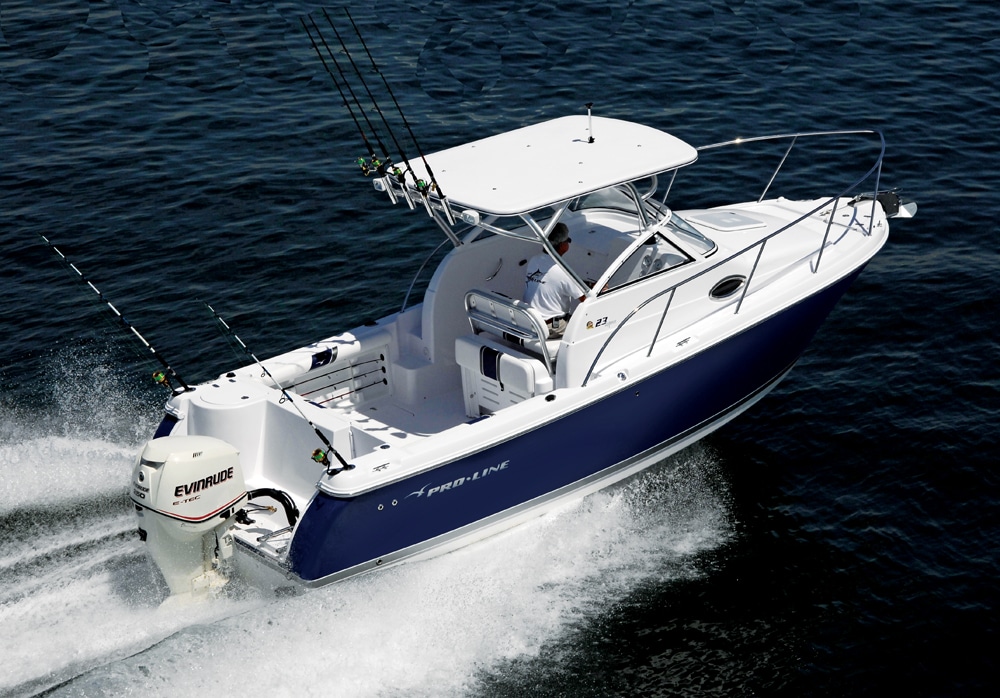
The cabins aboard these fishing boats are smaller than in express or midcabin boats due to the recessed, rail-protected walkways providing safer, easier access to the bow. Cy Cyr
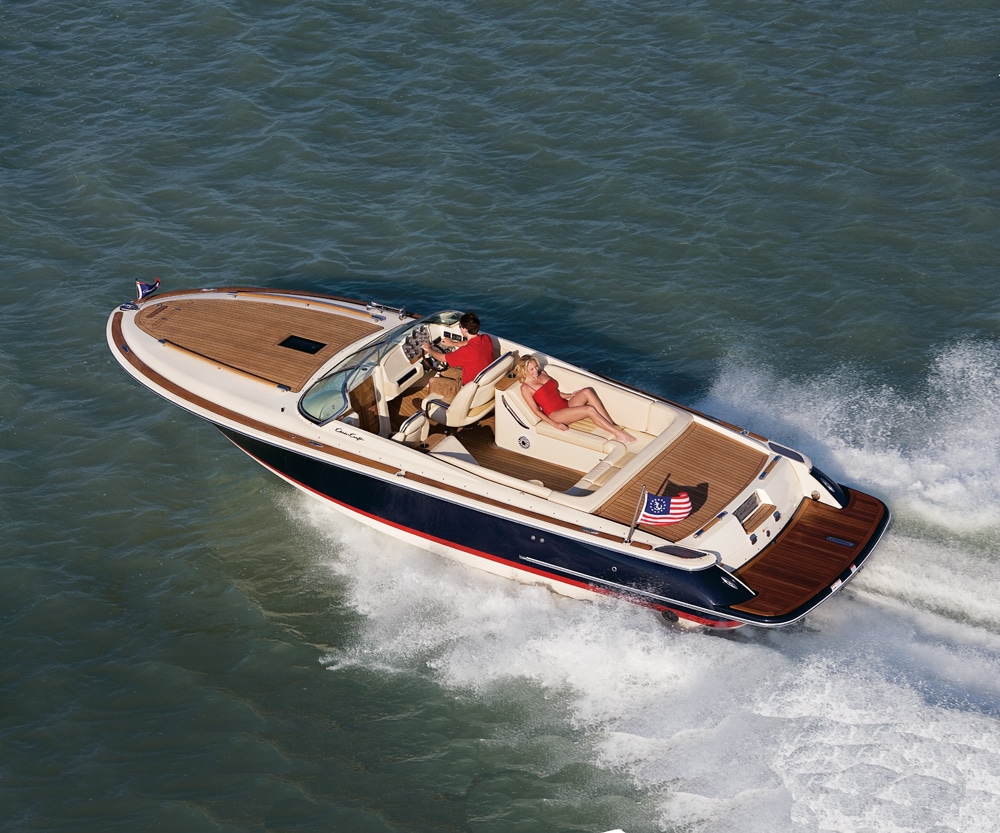
Sometimes called “sport boats,” a cuddy cabin provides a cushioned, crawl-in space ideal for taking naps, hiding a head and serving as lockable stowage. Racier looks than a bowrider. Cy Cyr
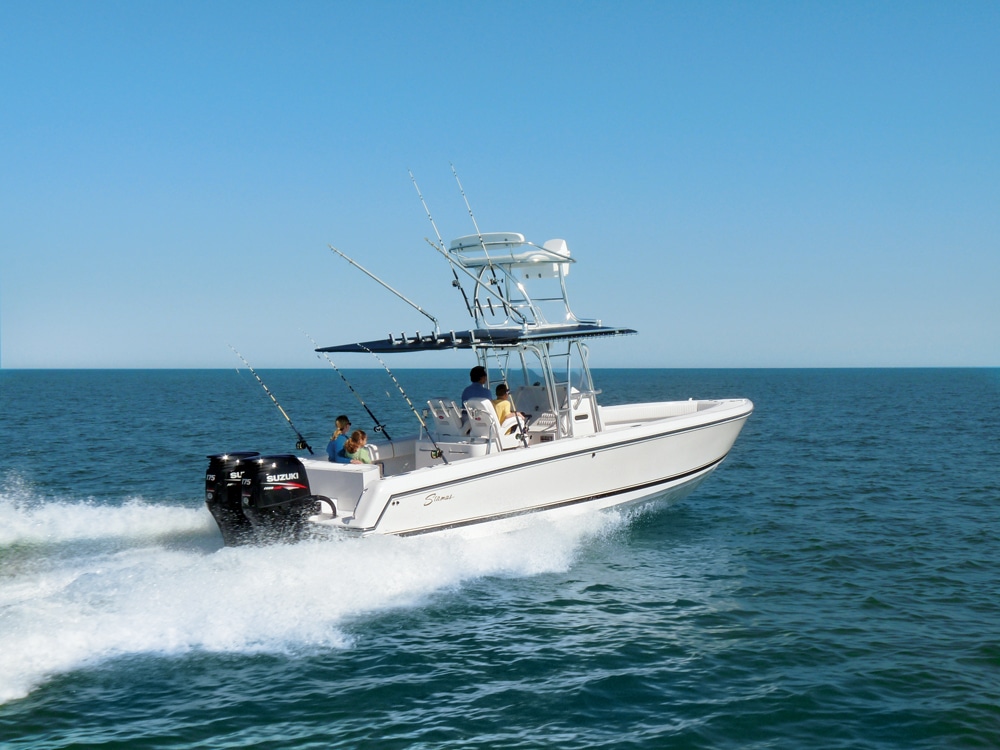
Complete 360-degree access around the boat and acres of cockpit make these the longtime darlings of anglers. Many are now equipped for day-tripping. Cy Cyr

Self-bailing cockpits, standard fishing features and hulls designed for open water differentiate these split-windshield boats from bowriders. Available as large as 40 feet. Cy Cyr

The quintessential “day boats,” bowriders provide maximum lounging topside. Most have a provision for an enclosed head, and larger versions sport berths and galleys. Cy Cyr

Deck boats carry the width of their beam to the bow for maximized space. Generally they have less deadrise than bowriders, but the distinctions are now blurring. Cy Cyr

A far cry from the “stand-up” models some may think of, these jet-powered craft provide excitement, economy and easy trailerability, in trade for few onboard amenities. Cy Cyr
“That monthly cost looks great, but will you qualify for it?”
Dealers and manufacturers have taken to affixing a low monthly cost to individual boats in large, vinyl graphics. “Problem is, that price isn’t reality for all buyers,” Jack cautions. “Some finance guy has based that on a specific term for a buyer with excellent credit.” Jack also urges buyers to consider the interest cost over long-term loans, plus the likelihood you could end up upside down in the boat for much of its life.
“The manufacturer’s giving $5,000 on this boat? Not happening, not anymore.”
Which leads us again to the tags on the boats you see. Most bear discounts that are a combination of dealer and manufacturer incentives. Some can be as juicy as $5,000 to $10,000 before negotiating.
“The manufacturer might be giving the dealer $1,000,” Jack suggests, “but he’s finding $4,000 to take off his list price, compressing his margin a little bit.”
I then receive an education in just how much that dealer can compress. It’s not as much as you might think. Jack says a typical manufacturer’s suggested retail price is about 35 to 38 percent higher than dealer cost. Good dealers fight to maintain a 20 percent gross margin. The eye-opener? That might be just a 3 to 4 percent net after overhead.
“There’s not a lot for them to play with. When you go in and try to negotiate with a dealer, he’s already taking a very thin margin.”

“It’s amazing how many of these deals are good only at the show!”
Jack next tackles perhaps the oldest cliché in the book — that a deal is only good for the duration of the show.
“That’s a gimme!” he exclaims. “Creating a sense of urgency is always present at the show.”

But is it real? Conventional wisdom says no. Dealers need to sell boats, and if you show up in their dealerships a week later ready to sign on the bottom line and fork over the cash, it would be a rare dealer who would turn you away.
Still, we learned from one industry insider last year that some manufacturers are cutting deals with dealers to move products at certain shows, and unless paperwork is signed by closing, all bets are off. Call it a manufacturer’s own way of creating a sense of urgency — in their dealers.
“You have to understand, these people spend a lot of money to go to the show, so they have a lot of incentive to sell. And the fact that you’re there, you probably will get your best deal. But you still have to negotiate. You have to get behind the desk and get your best deal.”
“The deal about pre-build order deals”
While he’s on a roll, Jack suggests asking a dealer how buying a boat out of stock — versus ordering one — would affect the price. “Dealers need to show turnover to keep the floor-plan companies happy,” he says. “Ask them the pricing advantages of taking one out of their stock versus having one built. You might be surprised at the difference.”
Should you insist on ordering, be aware that some manufacturers are requesting substantial down payments, up to 50 percent to start building and 100 percent on completion. Consider setting up an inexpensive, simple escrow with an attorney or trust company to protect your investment while the build is in progress.
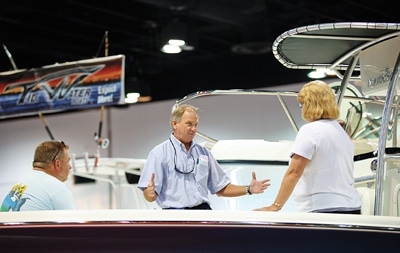
“Negotiating things that don’t cost the dealer what you’re paying is always a good thing.”
Other ways to sweeten a deal? “Get creative,” Jack suggests. “The cost of owning a boat is not just what you’re paying up front, but its operational costs. I would raise the question ‘What is this boat going to cost me going forward, and can I negotiate that as a part of my deal?'”
Try to bargain for things that don’t cost the dealer additional cash to provide but would cost you at retail, like basic maintenance. The dealer already has overhead costs that include keeping some service staff, whether they are servicing boats or not. Offering you three years of basic service for oil and fluid changes is much easier than trying to absorb the cost of an expensive tower or hardtop.
Several manufacturers and dealers have already jumped on this bandwagon, including Tigé and MarineMax.
“Don’t be afraid to walk away.”
As we begin to make our way out of the show, Jack offers one last piece of advice. “Look around you,” he says, motioning to aisle after aisle of shoppers. “Most of these people are just window-shopping, but the few serious ones are agonizing over this decision right now. They get caught up in the moment, caught up in the idea they’ll lose out if they hesitate, and often make a deal they might regret.
“Unless it’s an absolute, obvious killer deal, don’t be afraid to walk away. In this economy, that boat and that deal will probably still be there tomorrow.”

Taking the Show on the Road
To the consumer, a boat show is all red carpet and pearl-white fiberglass, but to those staging the show and breaking it down, it’s a whole different experience. They have to unload tons of equipment, position it all spot-on, work through unexpected obstacles, and do it on the tightest of deadlines. How does it all play out?
Larry Berryman, show manager for both the Atlanta and Tampa, Florida, boat shows, says a show is a little like a three-ring circus. Long-term planning starts months out; short-term construction happens within a much shorter time frame. It takes two weeks to assemble, stage, float, construct, wire and plumb the temporary marina that constitutes the in-water display. Then you hope some drunken local doesn’t take it all out at 3 a.m.
The inside portion of the show begins two to three days in advance, first in an outdoor staging area, then on the actual convention-center floor. Once inside, some exhibitors handle much of their assembly. Others rely on the show staff (in Tampa, off-duty firemen) to handle the forklifts and position boats in a display.
“To most dealers, it’s a precise combination of boats versus square footage,” Berryman says. “They get very strategic.”
The fastest part? Teardown at show’s end. “Never in a shorter period of time have more people fallen ill or had family members rushed to the hospital or parents pass away,” Berryman says with a laugh. “And it always happens between 4 and 6 p.m. on Sunday.
“It’s almost scientific. If it took you four days to build, it will take you a day and a half to get it out.”


